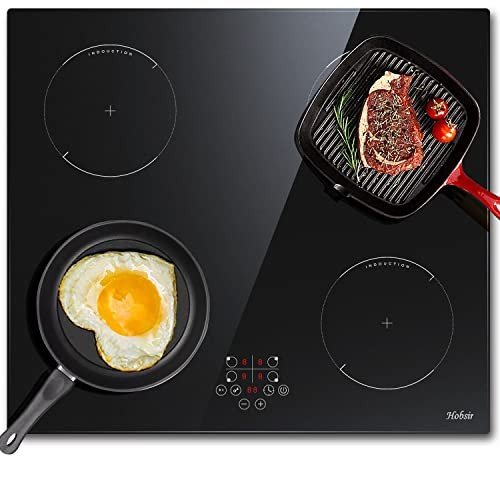Is Hob And Oven Really As Vital As Everyone Says?
Understanding Hobs and Ovens: The Essential Kitchen Appliances
In the world of kitchen devices, few items are as essential as hobs and ovens. These devices form the foundation of culinary activities, allowing people to produce whatever from basic meals to elaborate banquets. Comprehending the differences, types, and functionalities of hobs and ovens can considerably improve one's cooking experience. This article digs into the intricacies of hobs and ovens, providing insights that accommodate both novice and skilled cooks.
What Is a Hob?
A hob, typically referred to as a cooktop or range top, is the flat surface on which pots and pans are put for cooking. Hobs are geared up with heating aspects that create the required heat for cooking food. They are available in various forms, including gas, electric, induction, and ceramic choices. Each type provides distinct advantages and disadvantages.
Kinds of Hobs
Gas Hobs:
- Heat Source: Natural gas or propane.
- Advantages: Instant heat control and responsiveness, chosen by many chefs for accurate cooking.
- Disadvantages: Requires a gas connection and can be less energy-efficient.
Electric Hobs:
- Heat Source: Electric coils or smooth glass-ceramic surfaces.
- Benefits: Generally much easier to clean up, even heating, and extensively available.
- Drawbacks: Slower to warm up and cool off compared to gas.
Induction Hobs:
- Heat Source: Electromagnetic currents.
- Benefits: Quick heating, energy-efficient, and just warms the cookware, not the surrounding surface.
- Drawbacks: Requires compatible pots and pans (ferrous products).
Ceramic Hobs:
- Heat Source: Electric and has a smooth glass surface.
- Advantages: Sleek appearance, simple to tidy, and even heating.
- Disadvantages: Can take longer to warm up and cool off.
What Is an Oven?
An oven is an enclosed appliance that cooks food by surrounding it with dry heat. Ovens can be standalone units or combined with hobs in a single device called a variety. Ovens are versatile tools that can be used for baking, roasting, broiling, and more.
Kinds of Ovens
Standard Ovens:
- Heat Source: Electric or gas.
- Advantages: Good for standard baking and roasting.
- Drawbacks: Can have uneven heat circulation.
Convection Ovens:
- Heat Source: Electric or gas with a fan for flowing air.
- Advantages: More even cooking and much faster cooking times due to air flow.
- Drawbacks: Can be costlier and might require changes in cooking times.
Microwave Ovens:
- Heat Source: Microwaves.
- Benefits: Quick cooking and reheating; excellent for defrosting.
- Drawbacks: Can not brown or crisp food well.
Steam Ovens:
- Heat Source: Steam generation.
- Benefits: Retains nutrients and moisture in food, healthier cooking choice.
- Downsides: Longer cooking times and generally greater cost.
Key Differences Between Hobs and Ovens
While hobs and ovens serve the main purpose of cooking food, their functionalities and utilizes vary considerably. The following table summarizes these crucial distinctions:
Feature
Hob
Oven
Cooking Method
Direct heat
Enclosed heat
Main Use
Boiling, sautéing, frying
Baking, roasting
Heat Source
Gas, electric, induction
Gas, electric, steam
Cooking Area
Flat surface
Enclosed area
Cooking Time
Normally faster
Varies based on dish
Control & & Precision
Immediate and direct
Relies on settings and timers
Advantages of Using Hobs and Ovens Together
Combining using a hob and an oven can greatly improve the cooking procedure. Here are some advantages:
- Versatility: Different types of food can be prepared simultaneously.
- Efficiency: Using both enables for different cooking methods, such as burning on the hob and baking in the oven.
- Time-Saving: Multi-tasking can considerably lower general cooking time.
Upkeep and Care
To ensure the longevity of hobs and ovens, routine maintenance is essential. Here are some suggestions:
For Hobs:
- Clean spills instantly to avoid staining.
- Use suitable cleaners for specific products (e.g., ceramic cleaner for glass-ceramic hobs).
- Frequently examine gas connections for leaks (for gas hobs).
For Ovens:
- Wipe down the interior after each usage to avoid accumulation.
- Usage self-cleaning functions if readily available, or apply oven cleaners for difficult discolorations.
- Routinely inspect seals and gaskets for wear and tear (to keep heat effectiveness).
FAQs About Hobs and Ovens
1. What is the very best type of hob for a beginner cook?
Response: A ceramic or electric hob is often suggested for beginners due to relieve of use and cleaning.
2. Can I utilize any pots and pans on an induction hob?
Response: No, induction hobs require cookware made from magnetic products (e.g., cast iron or stainless steel).
3. How typically should I clean my oven?
Answer: It is recommended to clean your oven every couple of months, or more regularly if you use it frequently.
4. Is Ovens & Hobs to bake in a stove?
Response: Yes, stoves are typically better for baking as they supply even heat distribution. Nevertheless, some fragile dishes may benefit from standard ovens.
Understanding the functionality and differences between hobs and ovens is necessary for any cooking enthusiast. Whether one prefers the instantaneous heat of a gas hob or the precision of an induction cooktop, each type provides unique advantages. Likewise, ovens differ extensively in function, from standard baking to steam cooking. By appreciating these devices' functions in food preparation, cooks can improve their cooking abilities and enhance their kitchen activities.
